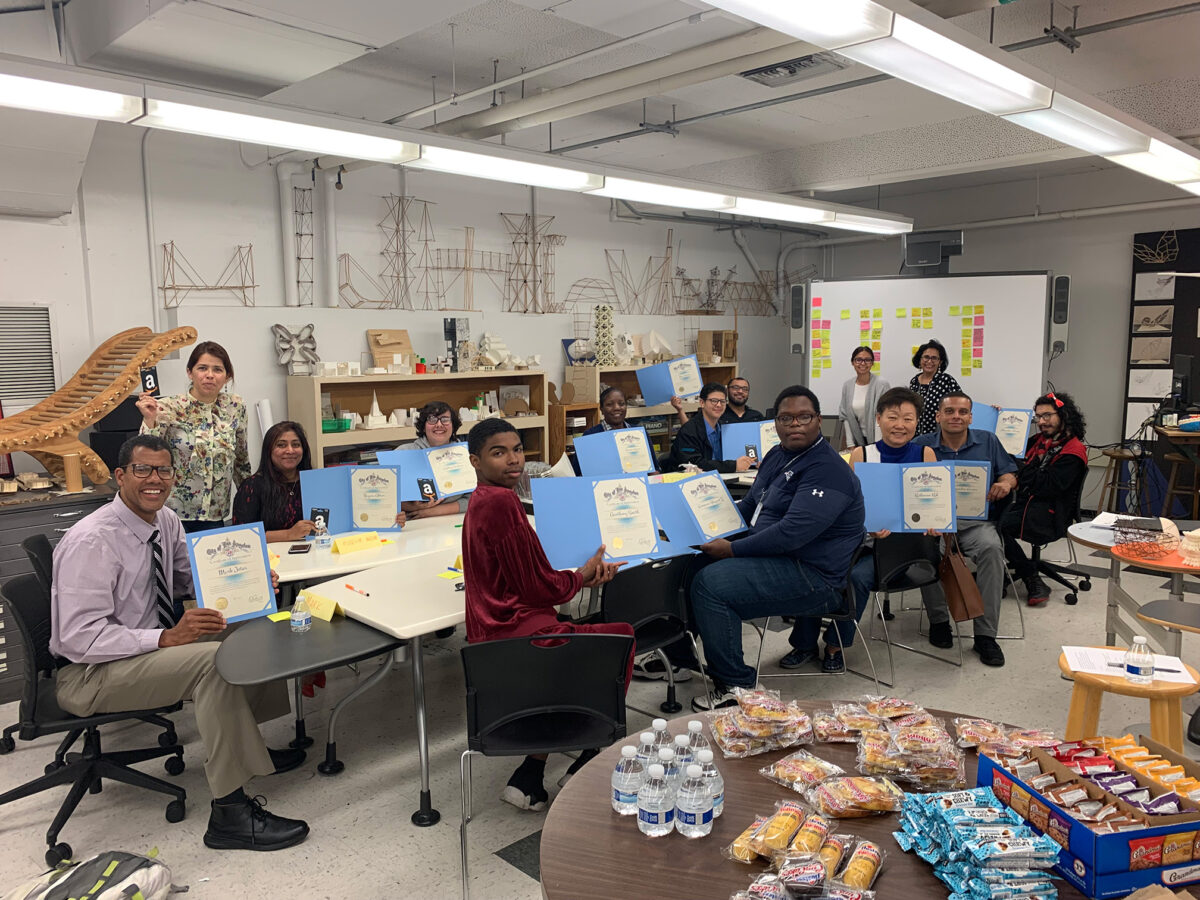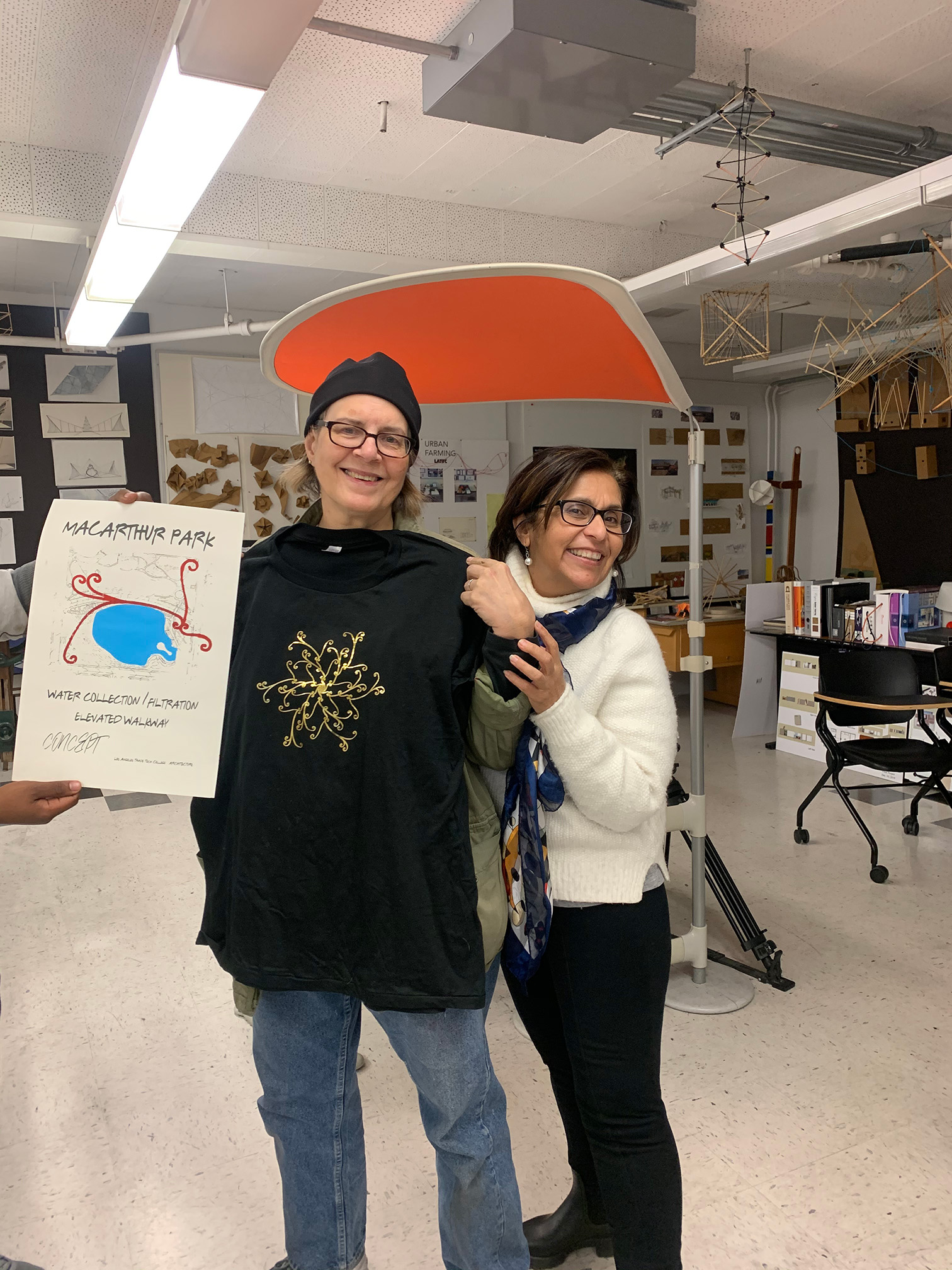Pando Days Update: Marcela Oliva, LA Trade Tech
Pando’s Rich Binell reached out to Marcela Oliva, professor of architecture at Los Angeles Trade Technical College, about her involvement in Pando Days 2019/20, and the project she designed for the program to make-over South LA’s and Pico Union alleyways into places for community, recreation, and health.
Read on to learn about what she’s teaching and doing that matters to them, to Pando, to Los Angeles, and to the world.
What we found is predictably astonishing, and inspiring.
Welcome.
How do you radically improve South Central?
Thirty years ago, Professor Marcela Oliva looked at the built environment of South Central Los Angeles and decided that it was “a dangerous mess.”
It had drugs. Crime. Trash. Filth. It was a bad place for the people who lived there.
This shocked her and made her decide it was time to make big changes.
She had architecture degrees from USC and Columbia University, and knew the connections between the built environment and culture. She had seen poor villages outside Mexico City when she was young—where her dad was a doctor volunteer in the hospital. But even there, it was never as bad as South Central. People, despite being poor, were not disconnected from their environment.
She wanted to change things in South Central. So, she went to Los Angeles Trade Technical College – LATTC—and made a proposal.
To change things with the help of students. To reconnect people to the place where they live.
But at that time, 30 years ago, she had to first change the school, because they were not yet embracing computer aided design. They thought computers weren’t here to stay.
Soon, she built their first computer lab through grants and local partnerships. And she started to teach her classes in architecture, environmental design, and ecology, and to challenge her students—mostly immigrants—both legal and illegal.
“My classes have real clients. Nothing abstract. We do urban interventions. A lot of my 100 students live in South Central.”
So, her challenge to them was, “What can we do to radically change South Central? Then she asked them the most important question: “What’s missing?”
And the answer was “Green.”
No trees, no plants, no flowers. No food. No benches. Nobody was connecting to the environment, they were avoiding it.
What could they do? A lot.

For Pando Days 2019/20, Marcela and her students created a model with which to transform Pico Union alleyways into green spaces.
“It’s great to find leaders who support big ideas for sustainability. I followed the vision of Gloria Farias’, who’s Executive Director of Pico Union Housing (PUHC), and worked very closely with her team and the community.”
Working closely with the community and PUHC, they designed countless and beautiful ways to reimagine alleyways in terms of clean air, energy, water, community and livable space. And, PUHC secured funding for implementation… from the Environmental Protection Agency (EPA).
For Pando Days 2021, she’s building on the same model, but pushing it further — this time, focused on Pando Days’ “pocket park” challenge, which targets a 2,500 square foot location adjacent to Pico Union PUEDE Center.
“We have a great opportunity to work for change in collaboration with local leaders. PUHC’s Gloria Farias has being working for over 40 years to build community power at the citywide, countywide, or districtwide level, and gives just this sort of leadership example.”
“Working together, we want to see a park in the middle of this very-high crime area. It will make a transformation in the lives of children and grownups. They all need green, healthy spaces.”
“A park is always more than a park. I see it as a mechanism for social change.
“We can imagine all sorts of positive change — emanating out from this one tiny pocket of green space. Small theater stages, playgrounds, exercise stations, recycling centers, and solar panels to generate electricity in the park. Students will need to be doing site analysis, design, water use calculations, case studies and inspiration boards—and they keep meeting with the neighbors,
“The goal is to change the living conditions of the people in the neighborhood. I get so excited to think about what they’ll create, and how we can empower communities on the streets, to change their streets.
“But the bigger potential impact is that we’ll be creating a duplicable model that people can use elsewhere to transform more neighborhoods across Los Angeles.
“This is not high-end design; this is connecting the people in the community at the street level, so they have ownership in transforming their neighborhoods.
“The most astonishing part is that this is doable. The people in the community want change for the better—and it’s not expensive to radically improve things. Good design is a human right, and it does not need to be expensive. We have tremendous untapped talent that can help us transform our communities to heal, interact, and thrive. ”
This is one of a continuing series of conversations with Southern California professors involved in Pando Days, our flagship program that brings together Southern California colleges and universities to implement LA County’s sustainability goals.
